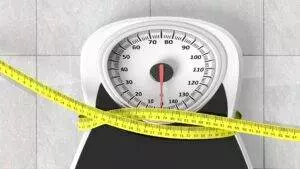
Debunking Myths About the Keto Diet: Separating Fact from Fiction
The ketogenic diet, or simply “keto” for short, is a low-carb, high-fat diet that has become increasingly popular in recent years. This diet involves drastically reducing your intake of carbohydrates and replacing them with healthy fats and moderate amounts of protein.
The goal of this diet is to enter into a state of ketosis, where your body burns fat instead of glucose as its primary source of energy. While there are many benefits associated with the keto diet, it’s also important to separate fact from fiction when it comes to some common myths about this way of eating. In this article, we will debunk two common myths about the keto diet and provide you with tips on how to follow a safe and effective keto diet.
Introduction: What Is the Keto Diet and Why Is It So Popular?

The keto diet was originally developed as a treatment for epilepsy in children who did not respond well to medication. However, today it is primarily used for weight loss and overall health improvements. One reason why the keto diet is so popular is because it can help people lose weight quickly and effectively. Additionally, the keto diet has been shown to improve blood sugar levels, reduce inflammation, and even lower cholesterol levels. Despite these benefits, there are still several misconceptions surrounding the keto diet. Let’s take a look at two common myths and set the record straight.
Myth 1: The Keto Diet Causes Kidney Damage – Fact or Fiction?
One common concern about the keto diet is that it may cause kidney damage due to increased protein consumption. However, this is largely unfounded. While excessive protein intake can put a strain on your kidneys over time, the amount of protein consumed on the keto diet is generally considered safe for most people. Additionally, studies have shown that the keto diet does not negatively impact renal function in healthy individuals. As long as you stick to recommended daily allowances for protein and stay hydrated, there should be no negative effects on your kidneys from following the keto diet.
Myth 2: The Keto Diet Will Make You Lose Muscle Mass – Fact or Fiction?

Another common concern about the keto diet is that it will lead to muscle mass loss. Some people believe that since the keto diet is low in carbs, which are typically associated with muscle growth, that it must therefore be detrimental to building muscle. However, this is another myth that needs to be dispelled. Studies have actually shown that the keto diet can help preserve lean muscle mass while promoting fat loss. This is likely due to the fact that the keto diet encourages the body to use stored fat for fuel, leaving more energy available for other bodily functions like muscle maintenance. Of course, incorporating resistance training into your routine can further support muscle growth while on the keto diet.
Conclusion: How to Follow a Safe and Effective Keto Diet
Now that we’ve cleared up some common myths about the keto diet, let’s talk about how to safely and effectively follow this way of eating.
- First and foremost, it’s essential to make sure you’re getting enough nutrients on the keto diet. This means focusing on whole food sources of healthy fats and proteins, such as avocado, nuts, seeds, fish, and grass-fed meats.
- It’s also crucial to stay hydrated and consume plenty of non-starchy vegetables to ensure you’re meeting your micronutrient needs.
- Finally, consider consulting with a registered dietitian or healthcare professional before starting any new dietary regimen, especially if you have underlying health conditions or take prescription medications.
With these guidelines in mind, you can enjoy all the potential benefits of the keto diet without worrying about unwarranted side effects.

